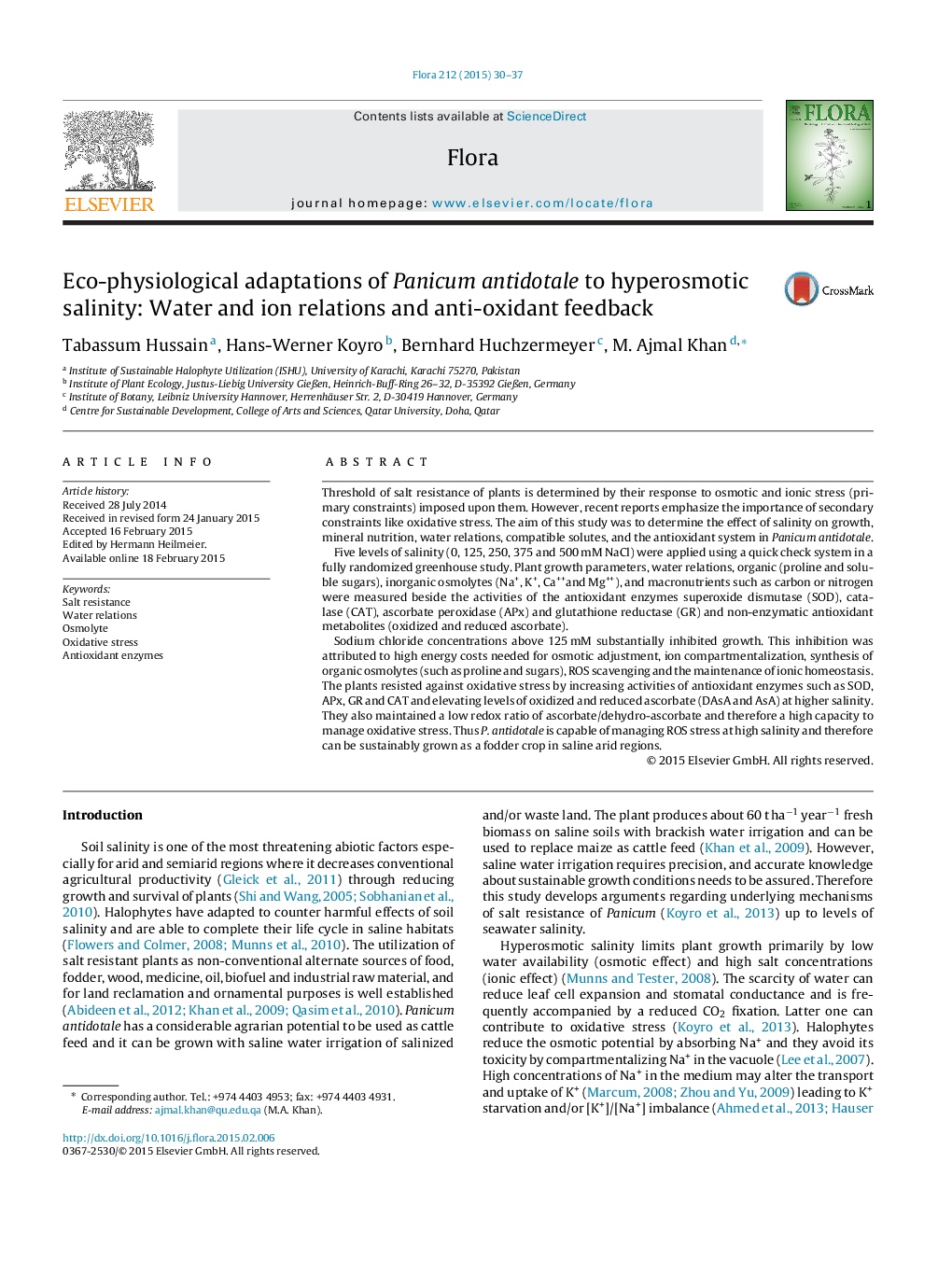| کد مقاله | کد نشریه | سال انتشار | مقاله انگلیسی | نسخه تمام متن |
|---|---|---|---|---|
| 2179453 | 1549947 | 2015 | 8 صفحه PDF | دانلود رایگان |
• Moderate salinity has little effect on growth of Panicum antidotale.
• Plants at high salinity failed to manage ion homeostasis resulting in growth inhibition.
• Energy cost was high to produce sugar and proline under saline treatments.
• Antioxidative enzymes played crucial role to control oxidative stress.
• Ascorbate/dehydro-ascorbate redox couple maintained the redox homeostasis.
Threshold of salt resistance of plants is determined by their response to osmotic and ionic stress (primary constraints) imposed upon them. However, recent reports emphasize the importance of secondary constraints like oxidative stress. The aim of this study was to determine the effect of salinity on growth, mineral nutrition, water relations, compatible solutes, and the antioxidant system in Panicum antidotale.Five levels of salinity (0, 125, 250, 375 and 500 mM NaCl) were applied using a quick check system in a fully randomized greenhouse study. Plant growth parameters, water relations, organic (proline and soluble sugars), inorganic osmolytes (Na+, K+, Ca++and Mg++), and macronutrients such as carbon or nitrogen were measured beside the activities of the antioxidant enzymes superoxide dismutase (SOD), catalase (CAT), ascorbate peroxidase (APx) and glutathione reductase (GR) and non-enzymatic antioxidant metabolites (oxidized and reduced ascorbate).Sodium chloride concentrations above 125 mM substantially inhibited growth. This inhibition was attributed to high energy costs needed for osmotic adjustment, ion compartmentalization, synthesis of organic osmolytes (such as proline and sugars), ROS scavenging and the maintenance of ionic homeostasis. The plants resisted against oxidative stress by increasing activities of antioxidant enzymes such as SOD, APx, GR and CAT and elevating levels of oxidized and reduced ascorbate (DAsA and AsA) at higher salinity. They also maintained a low redox ratio of ascorbate/dehydro-ascorbate and therefore a high capacity to manage oxidative stress. Thus P. antidotale is capable of managing ROS stress at high salinity and therefore can be sustainably grown as a fodder crop in saline arid regions.
Journal: Flora - Morphology, Distribution, Functional Ecology of Plants - Volume 212, March 2015, Pages 30–37
